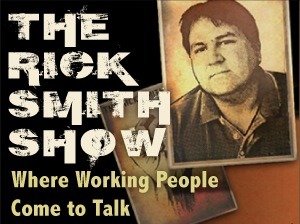A darling of Republican and Democratic lawmakers alike, Career and Technical Education is the reform everyone loves to love. They can help prepare students for employment, help provide a prepared workforce, and help make learning relevant and engaging as students explore and prepare for careers that pique their interest.
But, depending upon how it is implemented, the approach also has a dark side. Once known as vocational education, Career and Technical Education (CTE) has a checkered past when it comes to its history of serving as a dead-end dumping ground where students of color, students from low-income families, and students with disabilities missed out on college preparatory academics because they had been funneled into narrowly defined pathways to low-paying jobs, as explained in a 2011 National Education Policy Center brief about the promising approach of “Linked Learning.”
A new NEPC brief released Tuesday offers several suggestions in this regard, including monitoring the demographics of specific CTE programs to ensure that students have equal access to high-quality programs and that specific subgroups are not tracked into specific career paths.
A different but growing concern is highlighted by NEPC Fellow Kenneth Saltman, a professor in the Department of Educational Leadership at the University of Massachusetts Dartmouth, in a series of recent articles and commentaries by Jeff Bryant, director of the Education Opportunity Network, a strategy and messaging center for progressive education policy.
“There’s also a very long history of businesses looking for ways to have free worker training centers,” Saltman warned.
For instance, Cisco has its own branded program that’s offered at Virginia schools and described in Bryant’s articles. Akron Public Schools has a Bridgestone Academy of Applied Engineering and Technology that prepares students to be, among other things, technicians trained to use the equipment of Bridgestone, one of the world’s largest automotive companies. And the state of Virginia, as Bryant notes, promised to pour $1.1 billion into tech-focused education in a successful effort to convince Amazon to build a second headquarters in the state.
Parents have questioned whether these cozy partnerships between schools and specific companies transform into a series of narrowly defined funnels to specific jobs at specific companies, Bryant writes. Instead, CTE should be an opportunity for students to explore a variety of careers that interest them.
Saltman echoed their concerns. “A narrow focus on teaching skills really misses the boat on developing abilities that will matter to people in the future,” he said.
We don’t really know what the jobs of the future will be, so schools should be focused on developing students’ capacity to think, question, and theorize in new contexts related to their learning about the self and society. These goals will be gutted out by a narrow skills-based agenda.
Teaching students the more traditional, abstract skills “is not really at odds with ensuring students can become fully functioning in the economy,” Saltman added. “In many ways, a technical and skills-based curriculum will undermine students’ future economic capacity.”
In their extensive work on commercialism in schools, NEPC Fellows Alex Molnar and Faith Boninger highlight additional concerns about school-business partnerships and corporate sponsorships, including the use of digital technologies that violate student privacy and the danger that children will get the message that consumption is the primary means for attaining happiness and success in life.
And Saltman notes that the very companies that “partner” with schools to provide free training for their future work forces are too often the same organizations that fail to pay their fair share in taxes that support public schools.
“They take a lot more out than they put in,” he said.
So how can schools offer high-quality CTE that does not commercialize or narrow the curriculum at the whim of the latest company to offer funding assistance?
“At the very core of the issues,” Saltman said, “is the question over what public schools are for. There’s an old debate over the purpose of schools as preparation for work versus the purpose of schools as preparation for children to become adults who are capable of self-governance and full public participation.” In truth, schools can play both of these roles and more, but getting there requires deliberation and thoughtfulness, as well as a wariness of gifts that come with strings attached.






Recent Comments